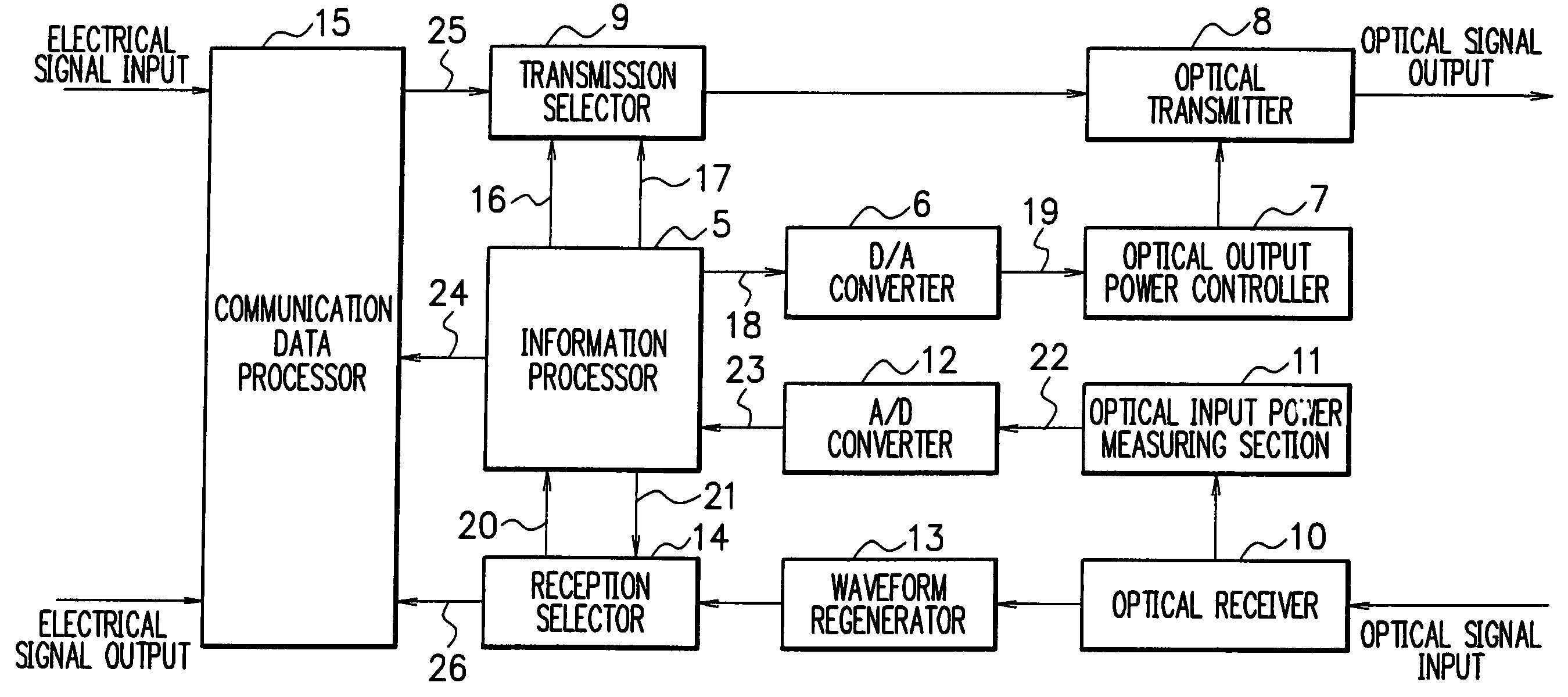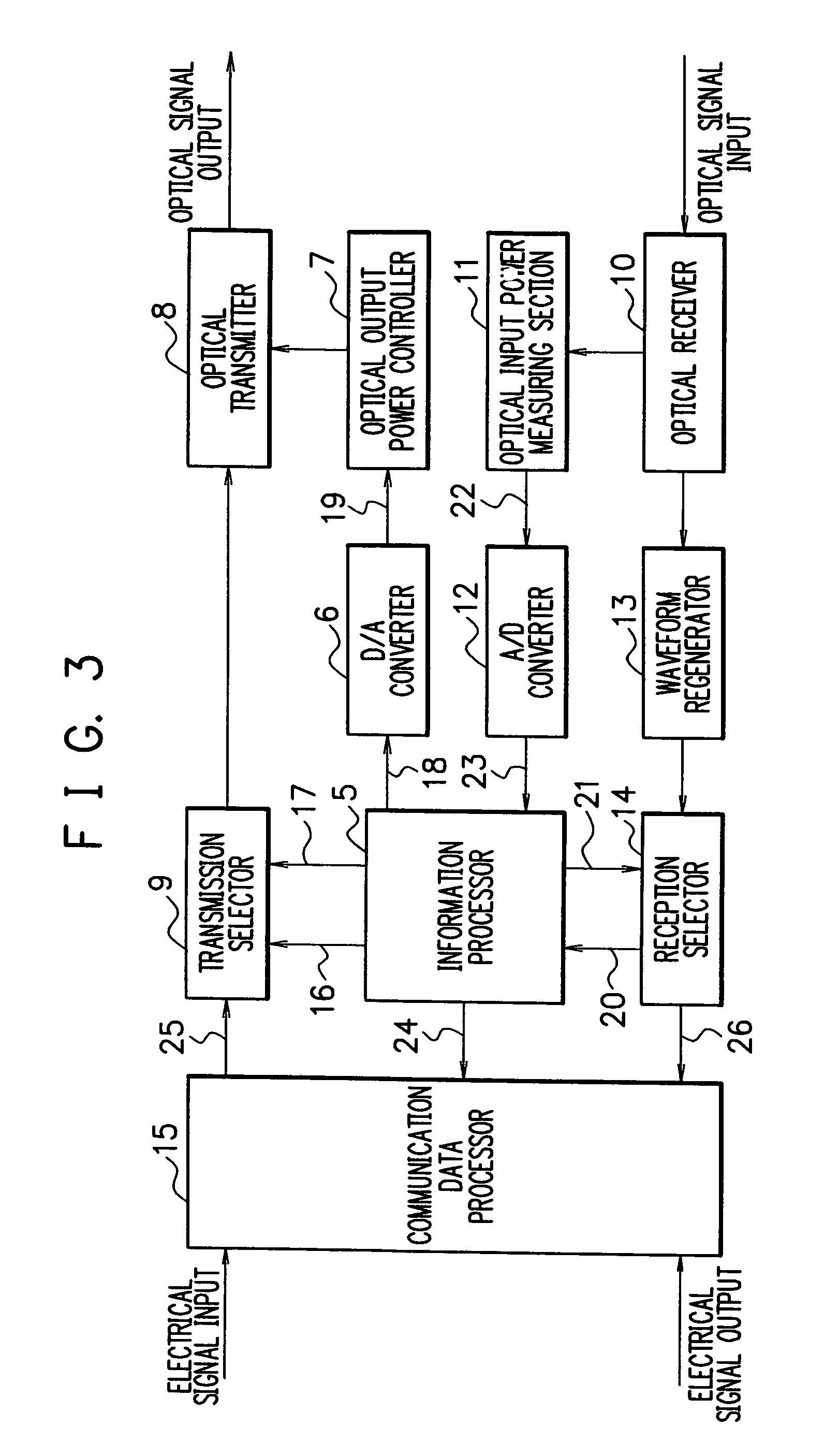Transmission method, transmitter-receiver, and transmitting-receiving system
a technology of transmission method and transmission method, applied in the field of transmission method, transmitter-receiver and transmitting-receiving system, can solve the problems of optical transmitter-receiver not having a function,
- Summary
- Abstract
- Description
- Claims
- Application Information
AI Technical Summary
Benefits of technology
Problems solved by technology
Method used
Image
Examples
first embodiment
[0061]FIG. 3 is a block diagram showing the construction of the optical transmitter-receiver according to the present invention. The optical transmitter-receivers 1 and 2 in FIG. 2 are of like construction and thus but one of them is shown in FIG. 3. As can be seen in FIG. 3, the optical transmitter-receiver comprises an information processor 5, a digital-analog (D / A) converter 6, an optical output power controller 7, an optical transmitter 8, a transmission selector 9, an optical receiver 10, an optical input power measuring section 11, an analog-digital (A / D) converter 12, a waveform regenerator 13, a reception selector 14, and a communication data processor 15.
[0062]The optical transmitter 8 converts an electrical signal to an optical signal to output the optical signal. The optical output power controller 7 controls the optical output power of the optical transmitter 8. The optical receiver 10 converts an input optical signal to an electrical signal. The optical input power meas...
third embodiment
[0122] the communication data TDM separator 44 is provided with a plurality of the I / O ports 45-1 to 45-10 as can be seen in FIG. 17. The TDM processor 47 time-division multiplexes signals from the first to tenth I / O ports 45-1 to 45-10, and produces a serial signal. Thereby, the optical transmitter-receiver can transmit signals as a serial signal to the other optical transmitter-receiver. Thus, transmission can be performed more efficiently as compared to the case where signals are transmitted individually. Moreover, the optimum number of multiplexing is determined according to the size of the path loss, and therefore, transmission can be carried out effectively and sensibly.
[0123]Incidentally, while in the first to third embodiments, transmitter-receivers are connected via optical fibers as transmission media, the optical fibers are given merely by way of example and without limitation. The transmitter-receivers may be connected through other transmission media such as electrical ...
PUM
 Login to View More
Login to View More Abstract
Description
Claims
Application Information
 Login to View More
Login to View More - R&D
- Intellectual Property
- Life Sciences
- Materials
- Tech Scout
- Unparalleled Data Quality
- Higher Quality Content
- 60% Fewer Hallucinations
Browse by: Latest US Patents, China's latest patents, Technical Efficacy Thesaurus, Application Domain, Technology Topic, Popular Technical Reports.
© 2025 PatSnap. All rights reserved.Legal|Privacy policy|Modern Slavery Act Transparency Statement|Sitemap|About US| Contact US: help@patsnap.com



